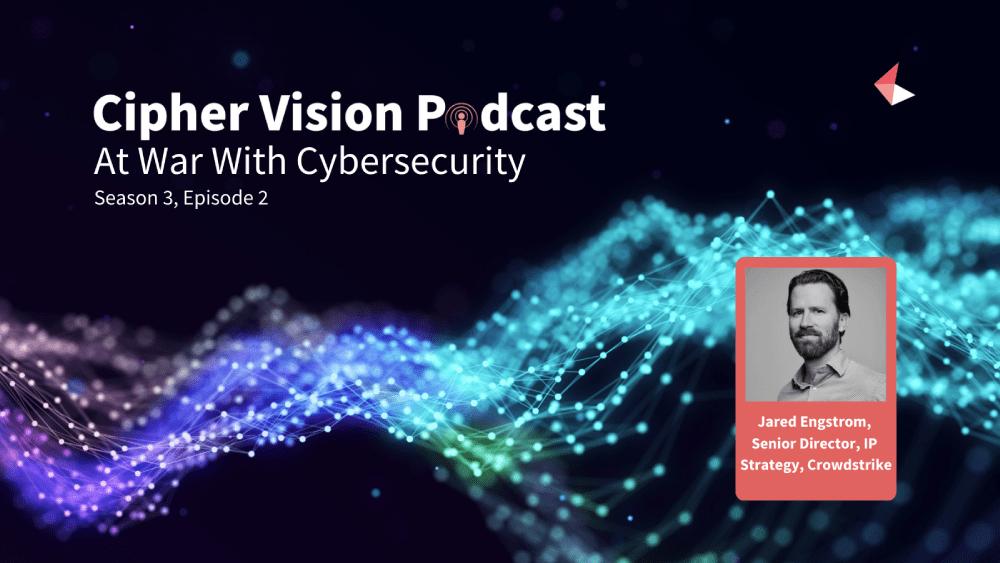At War With Cybersecurity

Introduction
Episode 2 in Season 3 of the Cipher Vision Podcast series features Jared Engstrom, Senior Director, IP Strategy at CrowdStrike.
He joined us to discuss how pivotal patents are to a strategic cybersecurity strategy. Jared also offered advice on the best ways to budget for your IP needs. and on how to communicate your requirements.
He chats to the hosts of the Cipher Vision podcast, who are:
- Francesca Levoir, Head of Marketing, LexisNexis Cipher
- Nigel Swycher, CEO, LexisNexis Cipher
Conversation highlights
On balancing risk in the cybersecurity space
It’s a trick and a challenge to figure out how to manage IP in a fast paced software environment.
There is a dimension there of really having to think about, okay, we’ve got this innovation that is valuable to us and we think it is innovative and patentable.
But is it something that we want to disclose to the public, because there may be security concerns, trade secret issues that we want to protect?
We’re trying to mitigate the risk of a cyber attack. And so on some level, we have to think about that as a component, in terms of what we publish and what we talk about, and how we think about protecting the IP assets.
The bigger risk is from NPE patent trolls. And to some extent, you have to mitigate against competitive risk as well. And so we have to have patents to make sure that we protect the value of the innovations that we have created and make sure that we can defend ourselves.
How long is the cycle of value and innovation?
If I was to get up on my lobbying horse, this is where I think patent laws are currently not equipped to manage the fast pace of innovation.
One of the things that you see is old legacy technologies that are really not relevant to today’s modern, next generation cybersecurity technologies, being used and wielded against companies that are really doing very interesting, novel, innovative things.
And so, how do you manage that? Patent laws give you a limited monopoly for 20 years. And is the cycle of value and innovation really 20 years?
Filing patents still makes sense, because we don’t know what the world is going to look like in 10 years or 20 years. And we don’t want to be caught with nothing.
It really comes back to how do you strategically make good use of the dollars that you have to invest in patents. And make wise decisions that are going to provide the most value in the long run?
How many patents are enough?
There’s a lot of analogies between right-sizing your portfolio and monitoring and detecting cybersecurity threats, in the sense of the more data points you can collect, the more likely you’re going to make a good decision about whether a certain action that you detect on somebody’s machine is malicious or not.
With patents, the more data points you can collect to paint a picture that says, here’s value and here’s naught value. Then you can start funneling more of the limited resources that you have into things that actually provide value.



